If you’ve ever lost your keys or your phone, then you know how immensely frustrating such a thing can be. Until recently, the only recourse was to hope that whatever it was that you lost would eventually turn up or that someone would find it and return it to you. Fortunately, there is technology that can help you find your lost item and even proactively prevent you from losing it in the first place. And that technology is known as low-energy RFID (a feature of Bluetooth 4.0.) Where does one get such a technology?
As it turns out, some clever manufacturers have packed this technology up in the form of tags and dongles and made them small enough to attach to your keys or anything else you might possibly lose. There’s a whole bunch of them even! They go by the names “Proximo Tracker”, “Protag Duet”, “LassoTag”, “Tile”, “Stick ‘n’ Find”, “TrackR Wallet”, and even “KeyFinder”.
And the best part is that they sell for around $30.
Meet the devices
The devices reviewed here are as follows:
- Kensington Proximo Tracker
- Protag Duet
- LassoTag iBeacon
- iHere 3.0
- Tile
- Smead Stick ‘n’ Find
- TrackR Wallet
- MagicFly KeyFinder
Kensington Promixo Tracker
![]() The Kensington Proximo Tracker key fob is about as wide as a US quarter coin and twice as tall and about a 1/2″ thick. The key loop is made of metal and feels sturdy; clearly designed to be put on a key chain. It comes with one CR2032 coin cell battery and a mini tool designed to open the device to install the battery. The Proximo Tracker also has a single “Smartphone finder button” and an on-board alarm.
The Kensington Proximo Tracker key fob is about as wide as a US quarter coin and twice as tall and about a 1/2″ thick. The key loop is made of metal and feels sturdy; clearly designed to be put on a key chain. It comes with one CR2032 coin cell battery and a mini tool designed to open the device to install the battery. The Proximo Tracker also has a single “Smartphone finder button” and an on-board alarm.
Protag Duet
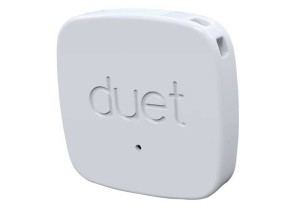 The Protag Duet is a good bit smaller than the Promixo Tracker fob in that it’s only about the size of a US quarter coin. The fob comes with a lanyard that doesn’t seem nearly as strong as other fobs, though a keyring can be fit through the loop. The Protag Duet comes with (2) two CR2016 coin cell batteries, but only one is needed to power the device, so the second battery can be kept as a spare. Protag claims a battery life of approximately 6 months. The Duet also has a “Smartphone finder button” and an on-board alarm.
The Protag Duet is a good bit smaller than the Promixo Tracker fob in that it’s only about the size of a US quarter coin. The fob comes with a lanyard that doesn’t seem nearly as strong as other fobs, though a keyring can be fit through the loop. The Protag Duet comes with (2) two CR2016 coin cell batteries, but only one is needed to power the device, so the second battery can be kept as a spare. Protag claims a battery life of approximately 6 months. The Duet also has a “Smartphone finder button” and an on-board alarm.
LassoTag iBeacon
![]() The LassoTag iBeacon is small like the ProTag Duet. It’s the cheapest and also has the fewest features. It has no “smartphone finder button” nor does it have an alarm. In fact, the iBeacon comes in a clear plastic sleeve the size of a business card with no instruction manual. Merely a QR code to scan to download the virtual instructions.
The LassoTag iBeacon is small like the ProTag Duet. It’s the cheapest and also has the fewest features. It has no “smartphone finder button” nor does it have an alarm. In fact, the iBeacon comes in a clear plastic sleeve the size of a business card with no instruction manual. Merely a QR code to scan to download the virtual instructions.
iHere 3.0
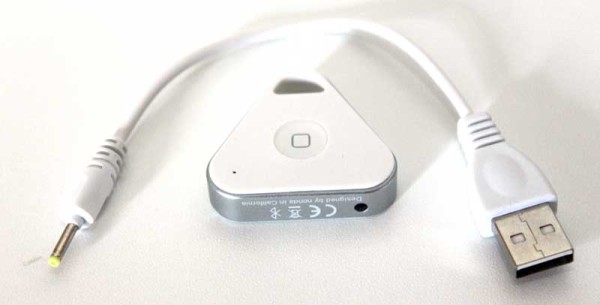 The triangular iHere 3.0 looks exactly like it was designed for an Apple iPhone or iPod. It comes with an internal rechargeable battery and a proprietary USB adapter to charge the iHere triangle. iHere 3.0 claims that the charge should last for approximately 1 week. The iHere also has a “Smartphone finder button” and an on-board alarm.
The triangular iHere 3.0 looks exactly like it was designed for an Apple iPhone or iPod. It comes with an internal rechargeable battery and a proprietary USB adapter to charge the iHere triangle. iHere 3.0 claims that the charge should last for approximately 1 week. The iHere also has a “Smartphone finder button” and an on-board alarm.
Tile
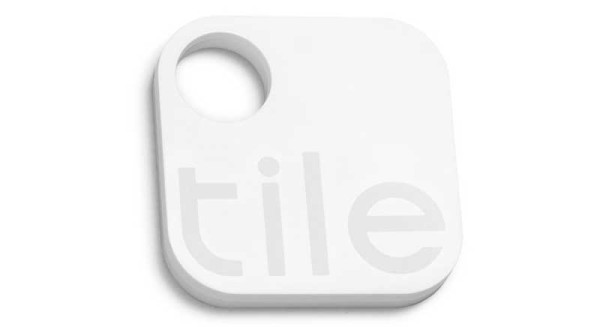 The square Tile also looks like it was designed for an Apple iPhone or iPod. In fact the packaging looks nearly identical to the iHere. It was difficult to figure out who was aping whom. The Tile has an unknown internal battery and expected lifetime is not talked about in the manual. The Tile has no button to locate a smartphone, but it does have an on-board alarm. It has both a loop to attach to a keychain as well as a very strong adhesive sticker to attach to a clean, flat surface.
The square Tile also looks like it was designed for an Apple iPhone or iPod. In fact the packaging looks nearly identical to the iHere. It was difficult to figure out who was aping whom. The Tile has an unknown internal battery and expected lifetime is not talked about in the manual. The Tile has no button to locate a smartphone, but it does have an on-board alarm. It has both a loop to attach to a keychain as well as a very strong adhesive sticker to attach to a clean, flat surface.
Smead Stick ‘n’ Find
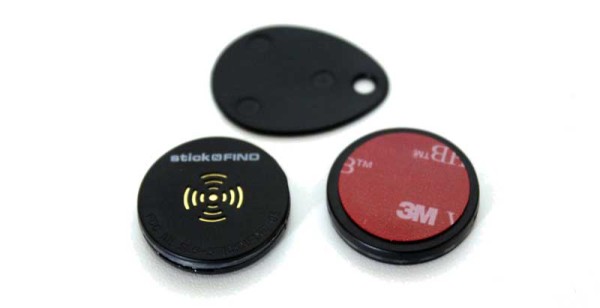 The Smead Stick ‘n’ Find is a good bit smaller than all the others and is only about the size of a US quarter coin. Despite the excessive packaging, the kit comes with two (2) RFID fobs. Each contains (1) one CR2016 coin cell battery. Smead claims a battery life in excess of 12 months. The Stick ‘n’ Find does NOT have a “Smartphone finder button”, but it DOES have an on-board alarm.
The Smead Stick ‘n’ Find is a good bit smaller than all the others and is only about the size of a US quarter coin. Despite the excessive packaging, the kit comes with two (2) RFID fobs. Each contains (1) one CR2016 coin cell battery. Smead claims a battery life in excess of 12 months. The Stick ‘n’ Find does NOT have a “Smartphone finder button”, but it DOES have an on-board alarm.
TrackR Wallet
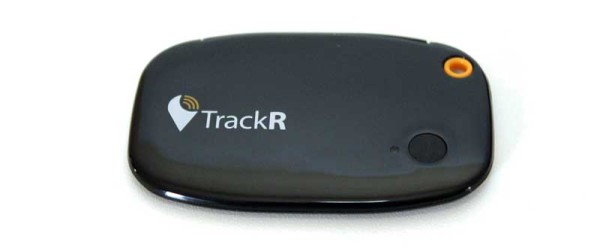 The TrackR Wallet fob is on the larger side. While I could imagine inserting this into a wallet, it would certainly make the wallet significantly thicker. It also has a keychain loop and is much more suited to this role. The TrackR Wallet comes with (2) two CR2016 coin cell batteries and claims a battery life of approximately 12 months. It has a button (used for pairing only) and an on-board alarm.
The TrackR Wallet fob is on the larger side. While I could imagine inserting this into a wallet, it would certainly make the wallet significantly thicker. It also has a keychain loop and is much more suited to this role. The TrackR Wallet comes with (2) two CR2016 coin cell batteries and claims a battery life of approximately 12 months. It has a button (used for pairing only) and an on-board alarm.
KeyFinder
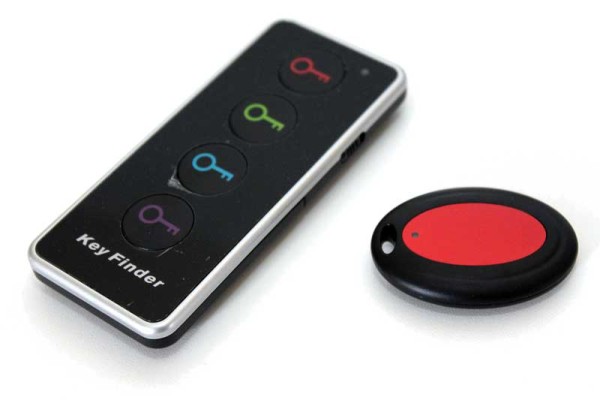 The KeyFinder is a bit different than the others. It still uses RFID technology, but doesn’t pair with a smart phone. Instead it has its own base station and comes with 4 key fobs. This is a much simpler device for folks who don’t have or want smartphones. Like the others, it is powered by coin cell batteries in the key fobs and uses regular AAA batteries in the base station.
The KeyFinder is a bit different than the others. It still uses RFID technology, but doesn’t pair with a smart phone. Instead it has its own base station and comes with 4 key fobs. This is a much simpler device for folks who don’t have or want smartphones. Like the others, it is powered by coin cell batteries in the key fobs and uses regular AAA batteries in the base station.
Different ways to use the RFID finder
There are a variety of functions built into the RFID finder tag. Here’s an overview of the major functionality.
Find It (aka. “Beep”)
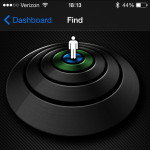 This is perhaps the most basic function of an RFID finder. Merely launch the finder app on your phone and press the “Find” button and the phone sends a signal to the RFID tag. If the misplaced item is in range, the alarm is activated and you follow the sound until you find it.
This is perhaps the most basic function of an RFID finder. Merely launch the finder app on your phone and press the “Find” button and the phone sends a signal to the RFID tag. If the misplaced item is in range, the alarm is activated and you follow the sound until you find it.
Track It (aka. “Radar”)
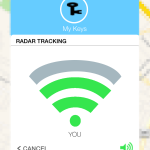 By measuring the signal strength of the connection between the RFID tag and the phone, the app is able to estimate how far away you are from the misplaced item in question. Unfortunately, it isn’t a true radar as it cannot tell you which direction to look. Still it does tell you if the signal is getting stronger or weaker and by deduction you can figure out which direction to head.
By measuring the signal strength of the connection between the RFID tag and the phone, the app is able to estimate how far away you are from the misplaced item in question. Unfortunately, it isn’t a true radar as it cannot tell you which direction to look. Still it does tell you if the signal is getting stronger or weaker and by deduction you can figure out which direction to head.
Separation Alarm (aka. “Leash”)
This feature is a nifty part of the Bluetooth 4.0 design specification. When the signal gets weak enough between the RFID tag and the phone, the app can use this information to declare that your “precious” something is now “out of range” or “off the leash” at which point it alerts you on your phone that you should go back and get whatever it is that you’re forgetting (like your keys… or your cat.)
Reverse Find (aka. “Locate Phone”)
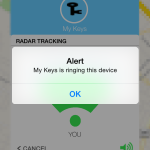 What happens if you misplace your phone, but you still have your keys with your RFID fob? Many of these devices also have a button on the fob that allows you to send a message back to your phone to activate the ringer so that you can find your phone. Pretty cool, huh?
What happens if you misplace your phone, but you still have your keys with your RFID fob? Many of these devices also have a button on the fob that allows you to send a message back to your phone to activate the ringer so that you can find your phone. Pretty cool, huh?
Crowdsourced Find (aka. “I’ve actually lost it”)
If you’re unlucky enough to have actually lost your item in question (it’s no longer anywhere in range of your phone), then you can declare to every other phone out there that uses this same RFID tag technology that it is missing and that their phone should “keep a digital eye out” for it. What this means is that if someone else walks by your lost item and their phone detects the unique identifier of your lost item, it silently reports back to a central server which then notifies you in turn of its location.
This is a very clever idea, yet has some implications to it:
- The more people who run the app on the phone, the better it works.
- Works better in cities than in rural areas because there are more people in urban areas. More phones with the app scanning means better likelihood of the missing item being found.
- Different RFID tag vendors are not inter-operable (eg. Tile doesn’t work with Protag and vice-versa) — By proxy, a more popular RFID fob manufacturer will have a larger user base running the app which means a better chance of finding the missing item.
- Also, for this to work, the app is always running in the background on your phone possibly draining your battery power faster.
- When your phone finds a lost item of someone else, your GPS location is silently sent back to the manufacturers’ servers. (Hopefully anonymized…)
Testing the RFID tags
Pairing the Tags with the Phones
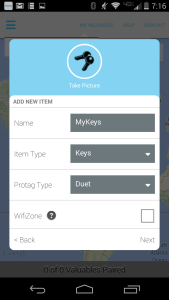 When using an RFID tag, the first thing that must be done is pair it with the Smartphone. This was done either one of a few ways: If the tag had a button on it, then it typically required that the user press the button while the pairing screen (like the one shown here) was active. Alternatively, some tags (like the Stick n Find) required that you tap the tag against a hard surface to activate the pairing mode (or remove the battery and reconnect it.)
When using an RFID tag, the first thing that must be done is pair it with the Smartphone. This was done either one of a few ways: If the tag had a button on it, then it typically required that the user press the button while the pairing screen (like the one shown here) was active. Alternatively, some tags (like the Stick n Find) required that you tap the tag against a hard surface to activate the pairing mode (or remove the battery and reconnect it.)
Tags that used a button were usually easier to pair. The Stick n Find (with the tapping method) was easy enough to use. The only device that had difficulty pairing was the iHere 3.0 — eventually it was able to pair, though.
The Protag app was especially nice as it allowed you to take a picture of the item in question so that if you have more than 1 tag, you can just pick it out by sight in the app, instead of reading the names. Much faster and easier to use.
Track It Test
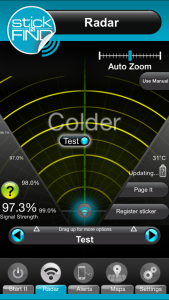 The Proximo Tracker, the Protag Duet, and the Stick ‘n’ Find all had a very cool “radar” feature which allows for tracking of the tag. The screenshot is of the Stick ‘n’ Find app. As shown here, the signal strength is fairly high which means that the tag is somewhere nearby.
The Proximo Tracker, the Protag Duet, and the Stick ‘n’ Find all had a very cool “radar” feature which allows for tracking of the tag. The screenshot is of the Stick ‘n’ Find app. As shown here, the signal strength is fairly high which means that the tag is somewhere nearby.
Also shown on the screen is the word “colder”, which if you’ve ever played that “warmer-colder” game, you surely know that you’re moving in the wrong direction and should head the other way.
All 3 products were able to fairly accurately estimate the distance from the “misplaced” tags in our test.
Find It Alarm and “Lost-in-the-Cushions” Test
Every RFID tag (except for the LassoTag) had an on-board alarm of some sort. And all of them produced a different alarm sound than the next.
| Proximo Tracker | Arpeggio – LOUD! |
| Protag Duet | High pitched beeps |
| LassoTag | – |
| iHere 3.0 | – |
| Tile | Jingle |
| Stick’n’Find | High pitches |
| TrackR Wallet | Ascending high pitch |
| Keyfinder | High pitched repeating beeps |
The only fob to pass the “Lost-in-the-Cushions” test with flying colors was the Kensington Proximo Tracker. Even when buried deep in the couch cushions, it could still be heard and located. All other fobs, while audible in the open, were completely inaudible in the couch cushions.
Technical Review
| ——————- | Proximo Tracker | Protag Duet | LassoTag iBeacon | iHere 3.0 | Tile | Smead Stick’n’Find | TrackR Wallet | MagicFly Keyfinder |
| Price | $30 | $30 | $20 | $25 | $25 | $36 | $30 | $25 |
| Battery | (1) CR2032 | (1) CR2016 | (1) CR2032 | Rechargeable | sealed unit — non-replaceable | (1) CR2016 | (2) CR2016 | (4) CR2032 + 2 AAA |
| Battery Life | 1 year | Up to 6 months | 1 year | < 1 week | ~1 year | 1+ year | Up to 1 year | 1 year |
| # of Tags | 1 | 1 | 1 | 1 | 1 | 2 | 1 | 4 |
| Max. Tags | 5 | 10 | ? | ? | 8 | ? | ? | 4 |
| Android | Yes | Yes | – | Yes | Yes | Yes | Yes | – |
| iPhone/iPad | Yes | Yes | Yes | Yes | Yes | Yes | Yes | – |
| Track (“Radar”) | Yes | Yes | – | – | – | Yes | – | – |
| Find (“Beep”) | Yes | Yes | – | Yes | Yes | Yes | Yes | Yes |
| Separation (“Leash”) | Android only | Yes | Yes | – | – | Yes | Yes | – |
| Reverse Find (“Locate Phone”) | Yes | Yes | – | Yes | – | – | – | – |
| Crowdsourced Find (“I’ve Actually Lost It”) | – | Yes | – | Yes | Yes | – | Yes | – |
| Alarm Sound | Arpeggio – LOUD! | High pitched beeps | – | – | Jingle | High pitches | Ascending high pitch | High pitched beeps |
| Warranty | 1-year | 1-year | 1-year | 1-year | 1-year | 1-year | 1-year | 1-year |
| Register / Sign-up | No | Yes | Yes | Yes | Yes | Optional | Yes | No |
| |
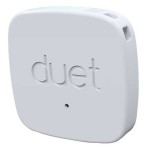 |
|
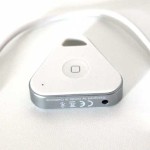 |
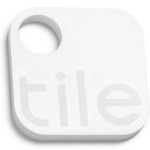 |
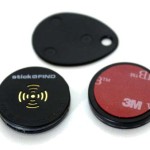 |
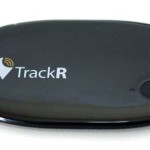 |
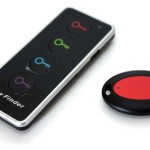 |
Conclusion
Of the 8 products reviewed here, there was no outright winner. Every product offered has at least 1 flaw or drawback that prevents it from covering every use case perfectly, so we’re going to break it down into a few categories and let you decide.
Best all-round RFID Tracker fob
Well, there are 2 products that really stand out well.
The Protag Duet covers all 5 major features (Track, Find, Leash, Reverse Find, and Crowdsourced Find) and has a really well designed app on both iPhone and Android.
The two drawbacks were its weaker battery life (~6 months) and the alarm was just a bunch of high pitched beeps which were not as loud as some others.
The Kensington Proximo Tracker has 4 of the 5 major features (Track, Find, Leash, and Reverse Find.) Because it lacks the Crowdsourced Find feature, this also means that you don’t have to register with Kensington which is notable thing for privacy-minded people.
In addition, the battery is much bigger and lasts up to 1 full year. And let’s not forget that the Proximo Tracker has the loudest alarm by far. Even when buried in your couch cushions, you can still hear it.
Best crowdsourced finding
The Tile: If the crowdsourced finding feature is of critical importance to you (as in, you’re likely to lose something outside your house or workplace), then the Tile is worth considering. This is a product that made it to market very early on and has a large following. As we mentioned previously, the crowdsourced finding feature only works well if a lot of other people are using the same technology. We’re fairly confident that Tile has the largest network of people using its products and the crowdsourced find feature will likely work the best with Tile.
That said, Tile only has 2 of the 5 major features (Find and Crowdsourced Find.) Also, the battery is sealed inside the unit, so when your battery dies, you need to send the unit back for replacement. This is kind of a bummer.
Best value
The Smead Stick ‘n’ Find is clearly the best value of the bunch. It has 3 of the 5 major features (Track, Find, and Leash) The app is reasonably well developed, but is not very clean aesthetically. It does do a very good job of giving all the important details, though. The kit comes with 2 tags averaging out to $18 per tag. (A good 35+% cheaper than the rest.)
While the alarm isn’t terribly loud, the good news is that the battery will apparently last more than a year and is easy to replace.
For technologically impaired (or non-smartphone users)
The MagicFly KeyFinder really had no other competition in this category. It’s a stand-alone device which is already paired with 4 key fobs. It has only 1 function: Press the respective color coded button and listen for the beeping tag, wherever it may be.
Does it work? Yes, it does. In fact, in our tests it worked up to 50 feet away. This is an ideal product for someone who doesn’t have a smart phone. It also has a mini flashlight built in. And it’s the right price at $25.
And the rest…
The TrackR Wallet is the largest of the bunch and was largely unremarkable. The app was well developed and even claimed to be integrate-able with the Nest thermostat (though we didn’t test this.) The disappointing thing about it was that the battery compartment seemed to slide out a bit too easily and the button on the device was for pairing only (no Reverse Find feature.) This was a missed opportunity.
The LassoTag iBeacon is the simplest of the bunch. The app is for iPhone/iPad only and didn’t really do much. It only featured the “Leash” function. No alarm, no reverse find, no radar. It was pretty much useless.
The iHere 3.0 seemed like it had so much promise. When paired with the phone, you can use the button to trigger a shutter release on your phone for remote selfies. Heck, it’s on version 3.0. It should be pretty good, right? We had great difficulty getting our phones to pair with the iHere. The real Achilles heal with this device was the rechargeable battery (and the proprietary charging cable.) The manufacturer claimed 1 week of battery life, but we could barely get it to hold a charge for more than 1 hour. It also lacked the Radar and Leash features that the better apps had. Either way, this one was a dud.
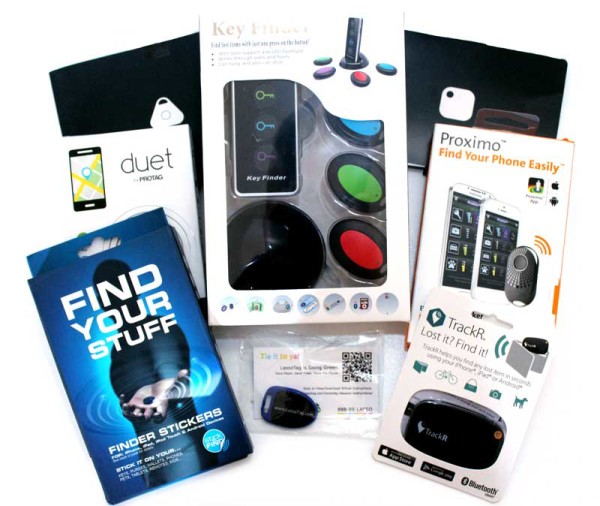

2 replies on “Bluetooth RFID Finders for your iPhone or Android smartphone — compared and reviewed”
I have a sticknfind. Can’t register my sticker. Can not talk to customer service. No one will answer the phone . Every time I tried to register this sticker the website says that the website is corrupt. How can I return it. Walmart will take it back. It’s a third-party item. I have tried on Google ,Bing ,chrome , on my iPad. I think I would like it.
I’m looking for a Device that show radar to the lost item. This says that it will do that.
That’s what I’m looking for.
Thanks Mills
Is there a RFID that can be triggered for separation alert when the distance is more then 10-20 feet?